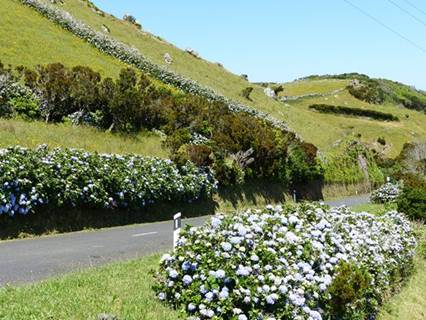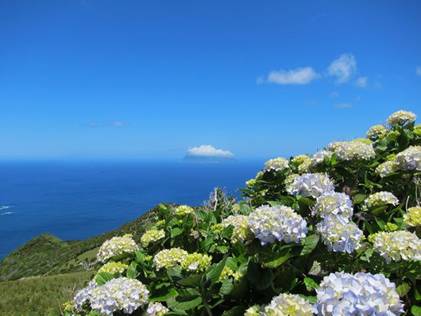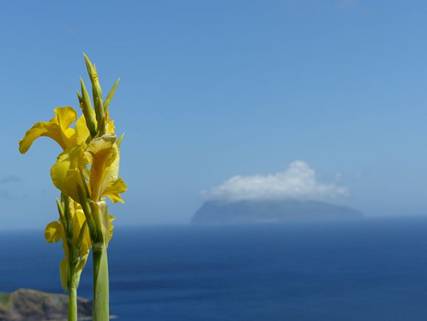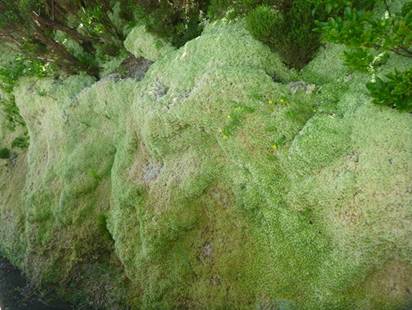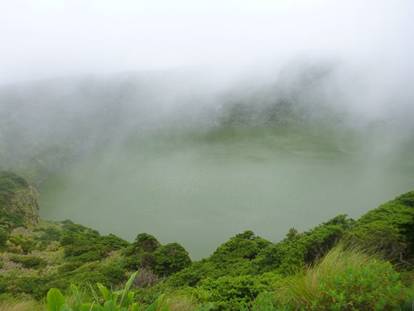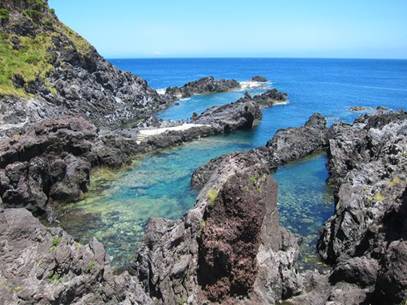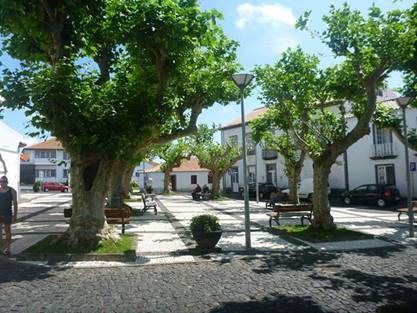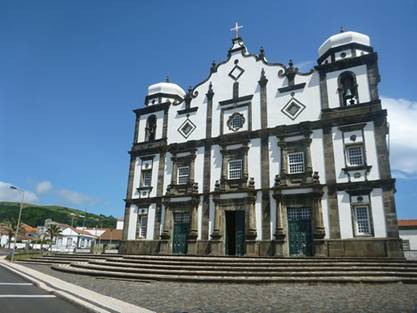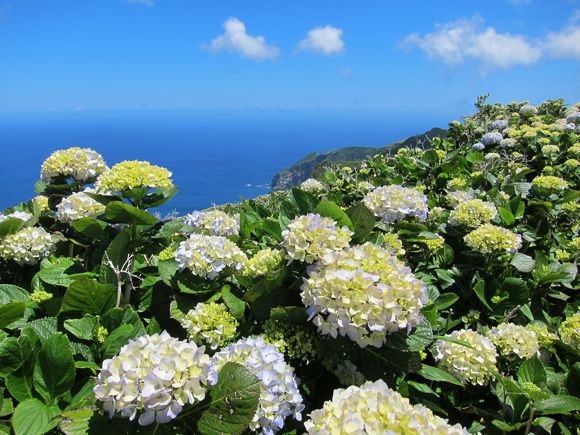Flores Floribunda

Thursday 18 June, 2015 Lajes, Flores, Azores 39 22.9N 32 10.0W Today's Blog by David (Time zone: BST -1.0; UTC) Portuguese: Flores. English: Flowers. Well…… it’s not called Flores for nothing! An island so called because flowers are pretty much ubiquitous. Few of them are endemic/indigenous. The most prolific is the Hydrangea, (native to southern and east Asia), which is abundant and is used for hedging and fencing:
Hydrangeas as hedging ……. ……………….. ……………. And as foreground interest in a photo of Corvo Canna, native to the Americas, is also abundant along the roadside:
Canna growing in the hedgerow next to the hydrangeas ……. ……………….. ……………. And as foreground interest in a photo of Corvo There are also roses, agapanthus, ginger lilies and blackberries – all pretty rampant and which together help define the Azores in general and Flores in particular – none of them native, having each been imported by the Portuguese at some stage. There are some species endemic to the Azores, including all kinds of moss and lichen which is abundant everywhere:
A close up of some moss The lighter greens all round this lake are moss or lichen AAhh, yes. The lakes. The Azores, being formed by a series of volcanic eruptions has many, many volcanoes. The vast majority are now extinct but have each left a sunken caldera. Most of these have now filled with rain water. The water in these calderas tends to be deep blue or black where it is clear water and green where it has algae in it. No tour of the island is complete without visiting as many of them as you can. So an island tour was in prospect. Richard rented transport for the crew’s shore leave tour of Flores. We don’t normally get to travel in luxury; Flores was no departure from the norm. Basic, yes ….but is WAS cheap!
The Skoda Ghia limousine hired for the Flores Tour The tour objective was to ‘see’ the island, and one that we achieved as far as it was feasible; It is fair to say there remain few roads on Flores we have not travelled. To the uninformed, it might have seemed like we were on a mission to see the few scattered monuments of interest – mainly churches, rock pools and an old whaling station but everywhere we went our navigator, Terry, just happened across another caldera. The cloud hung low over the island on the morning of our first day tour and many of these calderas where shrouded in mist/cloud ; we ended up visiting some two or three times. . Personally by the end I was caldera’ed out!
It was not all volcanoes. The scenery was spectacular; dramatic, hilly vistas, waterfalls around each turn of the road:
There are only two towns, and they are pretty small. Santa Cruz the original settlement and Lajes where a sensible dock has recently been built (making it the island’s principal port, and where we are now anchored).
The main square in Santa Cruz de Flores and its principal church What was remarkable though is that, with the exception of the odd farmer, shop keeper and restauranteur we didn’t see anyone actually making a living. Plenty of people employed by local government, cleaning the streets and roadside verges – but no-one making money for the economy. There was however plenty of evidence of EU money improving the roads and providing infrastructure aimed at attracting tourists … like us!
An EU funded public barbeque and toilet block built at the backend of nowhere (Thanks to each of you for your contribution) Finally, as we finish re-stowing the lazarette before setting off bound for Falmouth on what will be the last ocean passage of our journey, I leave you with one last picture of what Flores is all about:
Hydrangea Macrophylla |
